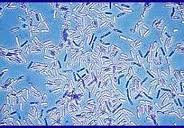Archive for August, 2013
Germs, Germs and More Germs
Posted by: | Comments After reading this article you may have wished you didn’t. My wife claims that I have ruined air travel for her for the rest of her life. As the cold and flu season approaches, I thought it may be a good idea identifying some of the most germ ridden areas for both inside and outside of your home. Proper care and precautions can greatly reduce the chance of coming down with a serious infectious disease this season.
After reading this article you may have wished you didn’t. My wife claims that I have ruined air travel for her for the rest of her life. As the cold and flu season approaches, I thought it may be a good idea identifying some of the most germ ridden areas for both inside and outside of your home. Proper care and precautions can greatly reduce the chance of coming down with a serious infectious disease this season.
The following information is not for the squeamish. So if you are brave, hold on as we stroll down germ lane.
Home
This may not come as a surprise to many of you, but the number one worst spot in your home is the kitchen sponge. Over 1.2 billion dangerous germs have been found on a single kitchen sponge. The sponge is quickly followed by the kitchen sink, kitchen counter-top, kitchen floor, telephone and refrigerator door handle. Surprisingly the bathroom toilet bowl has lower levels of germs than many parts of your kitchen. But one thing you may have not considered is the phenomenon of toilet plume. A plume of contaminated water droplets that are ejected into the air every time a toilet is flushed. This bacterial, viral and fecal filled aerosol lands on everything in your bathroom including your toothbrush. Closing the lid before flushing or finding a covered location for your toothbrush or any other items in your bathroom may be a wise move.
Outside of Home
Your office has several areas of concern, from the keyboard, fax machine and copier. The number one germiest object is the phone followed quickly by your desktop. The phone is typically the dirtiest piece of equipment because it goes straight to your mouth and it is usually never cleaned or disinfected. Traveling becomes another big concern during the holiday season, especially air travel. Not only the confined air space on a plane leads to the exchange of germs between passengers, but the infamous toilet plume is even more of an issue. Plane toilets use more force in the flushing action which promotes a more significant plume of fecal and other waste matter, which covers all surfaces in the small enclosed area. Have you ever noticed the condensation or streaks left by water droplets on the walls? The floor of the airplane restroom is covered with a layer of this waste mist. This material is transferred to the carpets as passenger leave and return to their seats. You may give a second thought before removing your shoes while in your seat.
Another item that is frequently overlooked, but has a significant amount of germs and bacteria is the television remote control in hotel and motel rooms. Some of the most nastiest germs have taken up residence on the remote control. It is an item that is never cleaned or disinfected and in many circumstances can be considered the most germ ridden item in the room. I have taken to carrying zip lock bags in my suitcase and upon entering a hotel room, I quickly place the remote control into one of the baggies.
What can be done?
Washing your hands several times a day is your best bet. Passing your hands quickly under running water or a quick rubbing of hands with soap is not enough. Use plenty of warm water and cleanse your hands with soap as long as it takes you to sing “Twinkle, Twinkle Little Star”. Most likely to yourself and not out loud. Hand sanitizers work well as a accompaniment for cleansing but not as a replacement for frequent hand washing with soap and water. For the kitchen, disinfect sinks and counter-tops regularly with a disinfectant or a solution of bleach and water (1 part bleach to 10 parts water). Place your kitchen sponge in the dishwasher, washing machine on a regular basis. Also placing the kitchen sponge in the microwave for 30 seconds kills a majority of germs and bacteria’s. Refrain from eating at your desk and clean and disinfect both the phone and other areas on and around your desk area regularly. By following these simple suggestions you may help reduce your chance of falling ill during this cold and flu season.
Fingernails and Your Health
Posted by: | CommentsCan your fingernails identify health problems? Yes, in many cases, they can. Although doctors and patients should never rely solely on the appearance of fingernails to diagnose health problems, sometimes they provide warning signs that can signal serious illness. Subtle variations in color or texture, with rippling, bumps or pits, on the surface of nails can provide valuable clues about overall health and wellness.
If you are experiencing a nail problem that does not seem to improve, make an appointment with your physician. Fingernails that become whitish in color could signal problems related to the liver. Yellowing nails with a slight blueish base can indicate diabetes, and people with heart disease can have nail beds that are red in color. Clubbing of the fingernails, a condition in which nail tips enlarge and begin to curve, is an outward sign of chronic lung disease.
When healthy nails begin to change in color or texture, the most common cause is a fingernail fungus. The fungus can cause nails to crack, peel, bend and change color or texture. This type of an infection is difficult to cure and should be treated by a dermatologist.
It’s always best to take good care of your nails by keeping them clean and dry. Be alert to changes in previously healthy nails and see your doctor if symptoms do not subside in a reasonable amount of time.
Can Odors Effect Your Sleep?
Posted by: | CommentsWhen researchers presented sleeping volunteers with odors of rotten eggs or roses, the subjects who smelled rotten eggs reported more bad dreams while the subjects who smelled roses reported more good dreams. Researchers speculate that odors have a stronger effect on dream emotions than other external stimuli because the sense of smell is linked directly to parts of the brain associated with dreaming.
Since smell can have a positive or negative effect on your sleep, you may want to place pleasant smelling items in your bedroom. Also in case you were wondering you are no more likely to die during a dream about dying than at any other time. Dreams of dying are fairly common.

Glucose Levels and Risk of Dementia
Posted by: | CommentsFrom the New England Journal of Medicine
Higher glucose levels are associated with increased dementia risk, according to a prospective cohort study in the New England Journal of Medicine.
Researchers followed roughly 2100 people aged 65 and older who were free of dementia at baseline. Over a median follow-up of 6.8 years, patients had at least five measurements of glucose or glycated hemoglobin taken. About a quarter of patients developed dementia.
For all participants, the risk for dementia increased with increasing glucose readings. For patients without diabetes, an average glucose level of 115 mg/dL was associated with an 18% higher risk for dementia, compared with a level of 100 mg/dL. For those with diabetes, 190 mg/dL was associated with a 40% increased risk, relative to 160 mg/dL.
The authors speculate that microvascular disease of the central nervous system could contribute to the association.
Read the free abstract: http://www.nejm.org/doi/full/10.1056/NEJMoa1215740
Stress Effects on Your Body
Posted by: | CommentsStress takes a heavy health toll on your mental health, but it can also manifest into surprising physical ailments. During heavy stressful times, your body will send out hormones to signal your body that it is experiencing an overload of stress. Extend releases periods of these stress hormones can lead to serious health and heart issues.
Here are 8 stress related symptoms to look for:
- Muscle Spasms – Tightening and contracting muscles over an extended period of time are an indication of stress overload. This can result in tweaked muscles or muscle spasms.
- Eye Twitches – A condition called “Blepharospasm” or uncontrolled eyelid contractions. An abnormal blinking or twitching of the eye muscles from overuse.
- Tattered Cuticles – Nail biting or picking of the nails or cuticles are a common way many people deal with anxiety.
- Dental Health – Teeth grinding can result from excessive stress which can erode dental work. This type of damaged can leave teeth susceptible to cavities.
- Rashes – Abundant stress can lead to rashes. The adverse effects of stress can impact the immune system and release histamine, causing irritation and itchy bumps.
- Nausea – Stomach discomfort and nausea can be the result of stress. If your anxiety is causing nausea, try this simple trick. Run tepid water over your fingers, many say this helps relieve the effects of nausea.
- Sleepiness – Stress hormones may cause your body to release adrenaline. Adrenaline can keep you up, awake and may lead to restless sleep.
- Confusion – Unable to make simple decisions can also be the consequences of excessive stress levels on your body.
Meditation, walks and just getting away from work for a few minutes can help reduce stress levels. Studies have shown that sunlight helps release serotonin in your body, which can help improve your mood. It also perks up your immune system. If you don’t see any significant improvement, talk with your physician.








